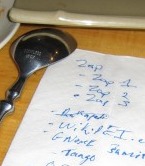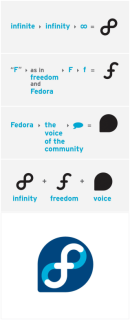Despite the misleading title, this is not a tutorial on how to use MediaWiki to build a website. Rather, it is an observation that MediaWiki can be used to build sites that look and feel like tradition (non-Wiki) websites.
What the heck is a “wiki”?
First, some background. A wiki is a special kind of website that anyone can edit. Pages on a wiki-powered website have an “edit” button, and anyone can make a change. MediaWiki is one of many software systems that can be used to power wiki sites. MediaWiki is most well known as the software behind the Wikipdia.
When I first started playing with MediaWiki to do some visual customization for the Mozilla wiki, I felt a little bit like I was wandering lost through a jungle of PHP, HTML, and CSS. However, after stripping out a lot of the features I didn’t want or need, I started to get the hang of visually customizing the MediaWiki interface.
I’ve since done some minor skin/theme design for our silverorange wiki, and the WikiPEI site, though I hope to improve both in the coming months.
What I’ve found most interesting about MediaWiki is that people are starting to use it to build “normal” non-wiki websites. Pages can be locked-down, so only certain users have editing privledges. This essentially merges the administration tools of the website into the front-end of the site. This merger has the advantage of making administration easier and more direct. However, it can also make the experience of browsing the site (as a non-editor) and bit less enjoyable (hence the attitude that “wikis are ugly and weird”).
While I’m not about to advocate MediaWiki as the ideal content management system for all websites, it is an interesting use of the technology. Some of the design folks in the Linux group at Novell have been pumping out some pretty slick looking websites based on MediaWiki. Here are some examples of their work:
Examples of MediaWiki-powered “Normal” Websites

Hula Project- Hula is a free/open-source calendar/mail server. The Hula Project website was the first site I found that had a traditional stable website feel to it, but was built on MediaWiki. The header is bold and attractive, and the primary navigation is dead-simple.

The Mono Project- Recently redesigned, the Mono site has a light, fun, cartoon-y feel to it. If it weren’t for the “edit” links sprinkled throuout, you’d never know it was a wiki.

Beagle Project- Beagle is a desktop search tool for Linux. The Beagle website follows the model of the Hula site, with a bold header, and simple navigation.
Are there other good examples of sites powered by MediaWiki (or other wikis) that look and feel like beautiful websites, rather that weird plain old wikis?






